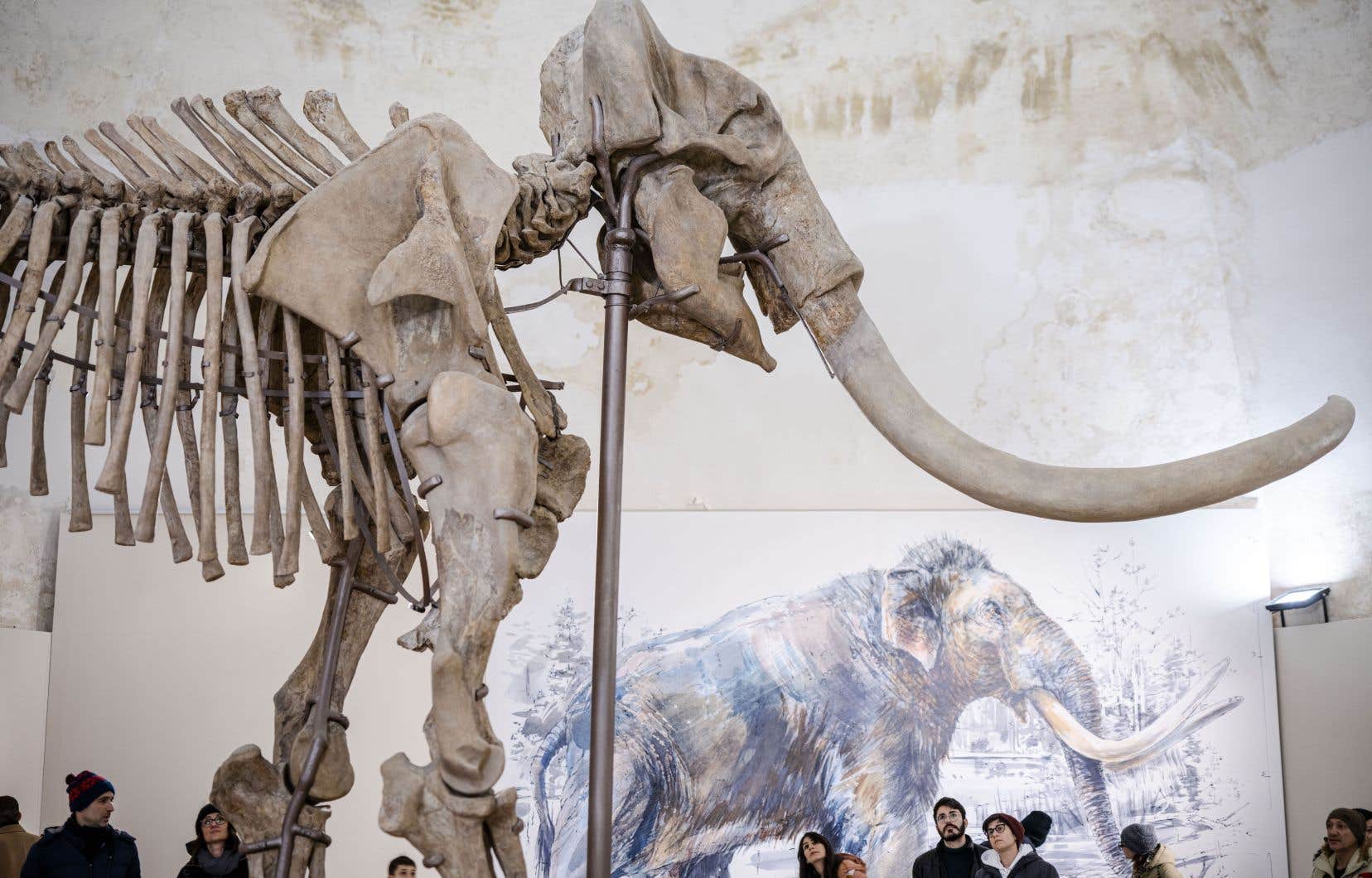It may have been by following in the footsteps of mammoths that some humans first settled in what is now Alaska, nearly 14,000 years ago, according to a study in which a professor at the University of Ottawa.
For four years now, associate professor in the Department of Earth and Environmental Sciences at the University of Ottawa Clément Bataille and several other researchers have been trying to learn more about the mammoths that lived several thousand years ago. years in Alaska.
“They are still fascinating and majestic species, so it’s fascinating to study them,” admits Mr. Bataille in an interview with The Canadian Press.
After delving into the life of a male specimen, “Kik”, who lived 17,000 years ago, the researchers turned to “Elma”, a female, whose life dates back to approximately 14,000 years old.
What caught the researchers’ attention this time was that the Elma fossil was found in the same place where humans would have set up camp around the same time, which raises the hypothesis that these humans were lured to North America following the trail of mammoths.
“We know that humans arrived in Alaska around 13,500 years ago. The first site where there is completely irrefutable evidence that humans are present is at Swan Point, and it is on this site that we find this tusk of this female, Elma,” mentions Mr. Bataille .
“What’s quite interesting about how humans got to Alaska at this time is that all of their villages and settlements are in places where there are a lot of mammoths,” he continues.
“These are areas with high numbers of mammoths. And so, our hypothesis is, potentially, that humans would have been attracted, passing from Asia to North America by the Bering land bridge – which had emerged at that time -, by any this large quantity of mammoths which was present in North America, and particularly in this area where there were more of them than elsewhere. »
We know that humans hunted mammoths, since they already did so in Europe and Eurasia. Without being able to confirm it, researchers also put forward the hypothesis that Elma was killed by hunter-gatherers.
First, its fossil was found where there was also a camp. Then, she was in good health when she died at the age of 20 — “which is still very young for a mammoth,” specifies Mr. Bataille. Then, she was found near the fossils of two other young mammoths, including a baby, who were part of the same herd.
“So that still makes three coincidences which are quite strong and which tell us that very potentially, this female and these two young mammoths were hunted and brought back to the camp,” underlines Mr. Bataille.
The impact of climate change
The researchers also analyzed the impact that climate change had on mammoths, which became extinct 11,000 to 12,000 years ago on the American continent.
Already, when comparing the lives of Kik and Elma, they noticed several differences.
“What we saw is that this male mammoth moved enormously over distances much, much, much greater than this female, sometimes with movements of 300 or 400 kilometers,” says Clément Bataille.
Kik’s life, 17,000 years ago, took place before the deglaciation. This means that Beringia, which separated Russia and Alaska, was “a large tundra plain”, a “really ideal environment for mammoths”, according to the researcher.
But Elma, who lived 14,000 years ago, didn’t have it so easy, since her life took place during the deglaciation, during which the valleys transformed into wetlands.
“Our hypothesis would be that it was still quite limited by the climate. These are animals that were very adapted to these open tundra environments. When the tundra disappears or becomes fragmented, it is much more difficult for them to move across this territory and, potentially, they are more sensitive to hunting and they are also more sensitive to extinction,” indicates Mr. Bataille.
Mr. Bataille and his colleagues are continuing their work to better understand what happened at the end of the last ice age, when several species, including mammoths, became extinct.
Their research on Elma was published in the journal Science Advances.
